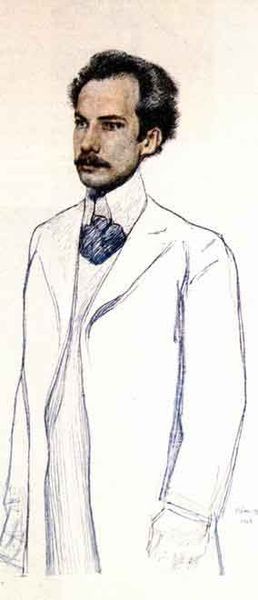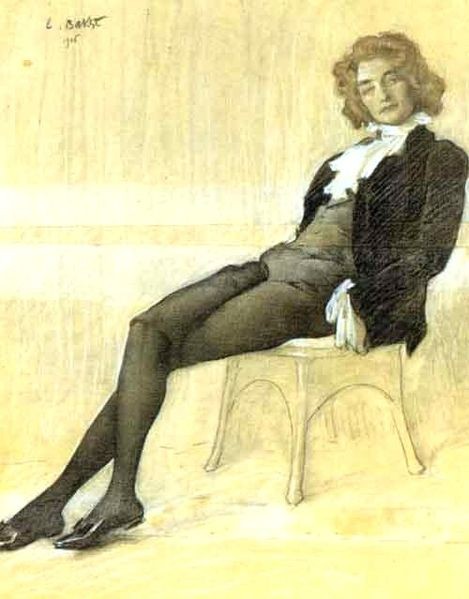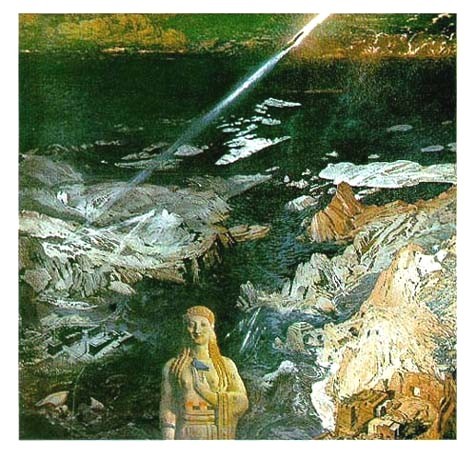Leon Bakst (Леон Бакст) (1866-1924)
Get a Leon Bakst (Леон Бакст) (1866-1924) Certificate of Authenticity for your painting (COA) for your Leon Bakst (Леон Бакст) (1866-1924) drawing.
For all your Leon Bakst (Леон Бакст) (1866-1924) artworks you need a Certificate of Authenticity (COA) in order to sell, to insure or to donate for a tax deduction.
Getting a Leon Bakst (Леон Бакст) (1866-1924) Certificate of Authenticity (COA) is easy. Just send us photos and dimensions and tell us what you know about the origin or history of your Leon Bakst (Леон Бакст) (1866-1924) painting or drawing.
If you want to sell your Leon Bakst (Леон Бакст) (1866-1924) painting or drawing use our selling services. We offer Leon Bakst (Леон Бакст) (1866-1924) selling help, selling advice, private treaty sales and full brokerage.
We have been authenticating Leon Bakst (Леон Бакст) (1866-1924) and issuing certificates of authenticity since 2002. We are recognized Leon Bakst (Леон Бакст) (1866-1924) experts and Leon Bakst (Леон Бакст) (1866-1924) certified appraisers. We issue COAs and appraisals for all Leon Bakst (Леон Бакст) (1866-1924) artworks.
Our Leon Bakst (Леон Бакст) (1866-1924) paintings and drawings authentications are accepted and respected worldwide.
Each COA is backed by in-depth research and analysis authentication reports.
The Leon Bakst (Леон Бакст) (1866-1924) certificates of authenticity we issue are based on solid, reliable and fully referenced art investigations, authentication research, analytical work and forensic studies.
We are available to examine your Leon Bakst (Леон Бакст) (1866-1924) painting or drawing anywhere in the world.
You will generally receive your certificates of authenticity and authentication report within two weeks. Some complicated cases with difficult to research Leon Bakst (Леон Бакст) (1866-1924) paintings or drawings take longer.
Our clients include Leon Bakst (Леон Бакст) (1866-1924) collectors, investors, tax authorities, insurance adjusters, appraisers, valuers, auctioneers, Federal agencies and many law firms.
We perform Leon Bakst art authentication, appraisal, certificates of authenticity (COA), analysis, research, scientific tests, full art authentications. We will help you sell your Leon Bakst or we will sell it for you.

Self-Portrait
Leon Bakst was a Russian painter and scene- and costume- designer who revolutionized the arts he worked in. Leon was born as Lev (Leib) Rosenberg in Grodno (currently Belarus) in a middle-class Jewish family. After graduating from gymnasium, he studied in St. Petersburg Academy of Arts as a noncredit student, working part-time as a book illustrator.

Supper 1902
On his first exhibition (1889) he took the name of Bakst based on his maternal grandmother’s family name Baxter. At the beginning of the 1890s he exhibited his works with Society of watercolourists. During 1893 – 1897 he lived in Paris, where he studied at the Académie Julian while still visiting Saint Petersburg often. After the mid-1890s he became a member of the circle of writers and artists formed by Sergei Diaghilev and Alexandre Benois, which later became the Mir Iskusstva art movement. In 1899, he co-founded with Sergei Diaghilev the influential periodical World of Art. His graphics for the World of Art magazine brought him fame.

Elisium 1906
He continued easel painting as well producing portraits of Filipp Malyavin (1899), Vasily Rozanov (1901), Andrei Bely (1905), Zinaida Gippius (1906). He also worked as an art teacher for children of Grand Duke Vladimir Alexandrovich. In 1902 he took a commission from tsar Nicholas II to paint Meeting of Russian sailors in Paris.

Andrei Bely

Zinaida Gippius
In 1898 he showed his works in the Diaghilev-organized First exhibition of Russian and Finnish Artists; in World of Art exhibitions, as well as the Secession in Munich, exhibitions of the Union of Russian Artists, etc. During the Russian Revolution of 1905 Bakst worked for magazines Zhupel, Adskaja Pochta, Satyricon, then for art magazine Apollon.

The Lightening of Zeus 1908
After the end of the decade of the 1900s, Bakst worked mostly as a stage-designer. Bakst designed settings for Greek tragedies, and in 1908 made a name as a scene-painter for Diaghilev with the Ballets Russes (Cleopatra 1909, Shakherezada 1910, Carnaval 1910, Narcissus 1911, Daphnis et Chloé 1912). All that time he lived in Europe because as a Jew he did not have the right to live permanently outside the Pale of Settlement.

Nijinsky in the ballet “Afternoon of the Faun” 1912
During his visits to Saint Petersburg he taught in Zvantseva’s school. One of his students was Marc Chagall (1908-1910). In 1910 they broke. Bakst advised Chagall not to go to Paris as, according to Bakst, it would be harmful for Chagall’s art and financially would probably cause him to die of starvation. Chagall moved there anyway, did not die and actually found his style.

The Firebird 1910
Reviews
1,217 global ratings
5 Star
4 Star
3 Star
2 Star
1 Star
Your evaluation is very important to us. Thank you.
